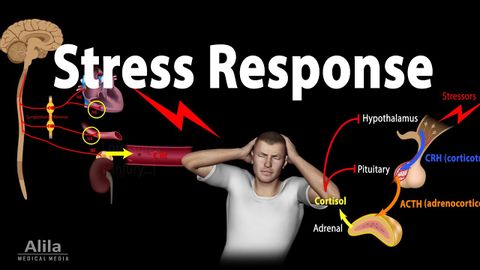
Subtitles & vocabulary
Stress Adaptation Response, Animation
00
林宜悉 posted on 2023/10/13Save
Video vocabulary
chronic
US /ˈkrɑnɪk/
・
UK /'krɒnɪk/
- Adjective
- Always or often doing something, e.g. lying
- (Of disease) over a long time; serious
B1
More perceive
US /pɚˈsiv/
・
UK /pə'si:v/
- Transitive Verb
- To notice or become aware of something
- To think of someone or something in a certain way
B1TOEIC
More eventually
US /ɪˈvɛntʃuəli/
・
UK /ɪˈventʃuəli/
- Adverb
- After a long time; after many attempts; in the end
- At some later time; in the future
A2
More Use Energy
Unlock All Vocabulary
Unlock pronunciation, explanations, and filters
